|
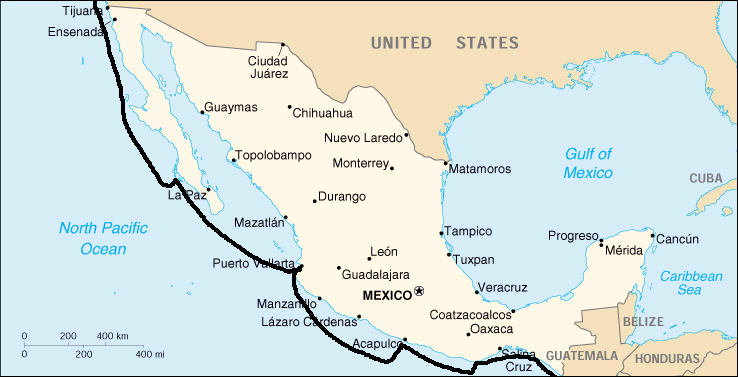 Our adventure starts in San Diego departing for Ft Lauderdale,
FL. on January 27, 2004. Our first stop was, San Benito, a small island,
(off the Baja Coast, Mexico) where we
anchored for dinner and then on south to "Mag Bay" anchorage arriving at 1 AM.
We anchored until morning and then crossed the Sea of Cortez to our next stop, Puerto Vallarta, arriving February 1st,
(Jayne's birthday), for our first check-in point to Mexico. Our adventure starts in San Diego departing for Ft Lauderdale,
FL. on January 27, 2004. Our first stop was, San Benito, a small island,
(off the Baja Coast, Mexico) where we
anchored for dinner and then on south to "Mag Bay" anchorage arriving at 1 AM.
We anchored until morning and then crossed the Sea of Cortez to our next stop, Puerto Vallarta, arriving February 1st,
(Jayne's birthday), for our first check-in point to Mexico.
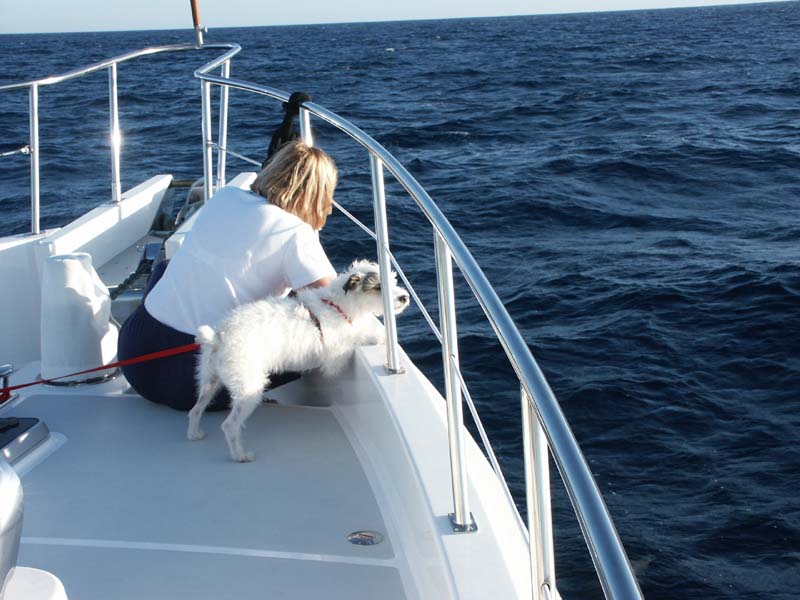 After a short days rest, we were off to Acapulco with one day stop, at Isla
Ixtapa.
We arrived in Acapulco, early morning, on February 5th. We spent
just enough time to refuel and provision. The next morning, we departed for our run to Huatulco,
the last southern stop in Mexico. After another, short day and overnight
stop, we departed for
the dreaded crossing of the Gulf of Tuanatepec and then on to El Salvador. After a short days rest, we were off to Acapulco with one day stop, at Isla
Ixtapa.
We arrived in Acapulco, early morning, on February 5th. We spent
just enough time to refuel and provision. The next morning, we departed for our run to Huatulco,
the last southern stop in Mexico. After another, short day and overnight
stop, we departed for
the dreaded crossing of the Gulf of Tuanatepec and then on to El Salvador.
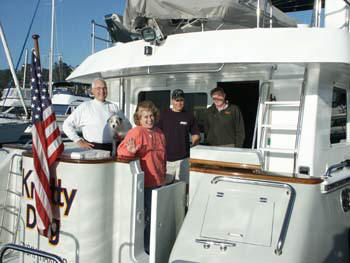 Five days and five nights at sea, crossing borders and
languages, raveling 1100 miles, loaded with enough food to feed 100 men around
the Horn on the Bounty. We’ve had two rough days and nights but three 3 calm
and beautiful ones on our nonstop passage from San Diego to Puerto Vallarta.
We’ve had hundreds of dolphins accompanying us on our journey down the coast of
Baja. Captain John Rains who writes the “how to” cruising books on cruising
from California to Florida and writes for Sea Magazine is aboard teaching us the
ropes on this foreign journey. He will be with us until we reach Costa Rica and
then we are on our own. He has taken boats through the Panama Canal 65 times
and is the authority on this kind of cruising, so we feel safe with him, though
he won’t be joining us through the passage from the Pacific to the Atlantic. We
are enjoying hearing all about his experiences, great stories! Sea Magazine has
asked our permission for John to write our journey so you may read another side
of this in an upcoming issue. It’ll probably be more accurate I’m sure. Five days and five nights at sea, crossing borders and
languages, raveling 1100 miles, loaded with enough food to feed 100 men around
the Horn on the Bounty. We’ve had two rough days and nights but three 3 calm
and beautiful ones on our nonstop passage from San Diego to Puerto Vallarta.
We’ve had hundreds of dolphins accompanying us on our journey down the coast of
Baja. Captain John Rains who writes the “how to” cruising books on cruising
from California to Florida and writes for Sea Magazine is aboard teaching us the
ropes on this foreign journey. He will be with us until we reach Costa Rica and
then we are on our own. He has taken boats through the Panama Canal 65 times
and is the authority on this kind of cruising, so we feel safe with him, though
he won’t be joining us through the passage from the Pacific to the Atlantic. We
are enjoying hearing all about his experiences, great stories! Sea Magazine has
asked our permission for John to write our journey so you may read another side
of this in an upcoming issue. It’ll probably be more accurate I’m sure.
SAN BENITO, BAJA COAST, MEXICO
We stopped (no getting off) for a quiet dinner and to get a
short relief
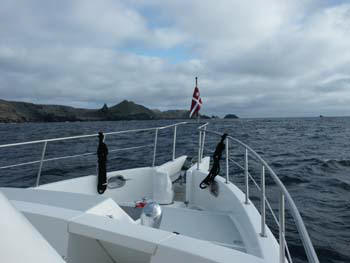 from rough seas the second evening at San Benito Island 30 miles
just off the Baja Coast. It was the next best thing to the Galapagos for me.
The shore was loaded with Elephant seals, sea lions, and baby seals near our
boat. Many varieties of birds could be seen flying everywhere. The cacophony
of the animals was entertaining. The sea was pristine and loaded with kelp and
life. The smell of land and wild life was rich, almost too much for Ziggy. We
let Ziggy stand on the swim deck platform at the waterside and a dozen baby
seals came up to the boat to investigate this white furry creature. It was an
evening dinner filled with the sounds of nature as our muzak. from rough seas the second evening at San Benito Island 30 miles
just off the Baja Coast. It was the next best thing to the Galapagos for me.
The shore was loaded with Elephant seals, sea lions, and baby seals near our
boat. Many varieties of birds could be seen flying everywhere. The cacophony
of the animals was entertaining. The sea was pristine and loaded with kelp and
life. The smell of land and wild life was rich, almost too much for Ziggy. We
let Ziggy stand on the swim deck platform at the waterside and a dozen baby
seals came up to the boat to investigate this white furry creature. It was an
evening dinner filled with the sounds of nature as our muzak.
A small skiff with three Mexican fishermen came by from the
small village to trade abalone for sodas.
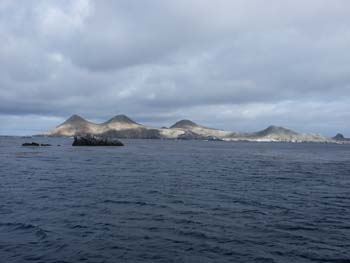 I declined because I couldn’t picture
me cooking abalone on the high seas. It was a job to slather some mayo on some
bread and through some turkey in it. I declined because I couldn’t picture
me cooking abalone on the high seas. It was a job to slather some mayo on some
bread and through some turkey in it.
This is truly a desolate location. The village has 40
people and some children according to the fishermen. Water is a problem for
them and anything you can give them is a treat, as small as a candy bar or a gal
of fresh water. How they live with not a blade of grass is a thing to wonder.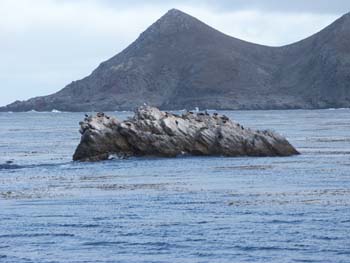
"MAG
BAY', BAJA, MEXICO
Our only other “stop” during the trip was a 6 hour-lay over
in “Mag Bay” further south. This layover was calculated so we could cross the
Sea of Cortez and arrive Puerto Vallarta precisely at dawn. We came in to Mag
Bay at night and could see and hear nothing. In the morning, there was a foggy
mist concealing the shore only to reveal the sharp mountainous terrain above. A
seal came by and gave us a glance and again another skiff with fishermen came by
offering a trade of lobster for whatever. Our crew called them “shorties” which
I was told means the lobster are undersized and you take the risk of being
caught by an official nearby if you buy them.
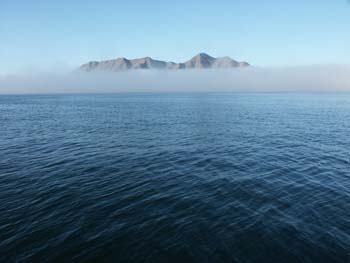 “Mag Bay” I was told is a main anchorage stop for many
heading south although we were the only souls there. It is also the sight of
some bad ship wrecks in the 1800’s. Both were side-wheelers and involved many
people. There are said to be ghosts and remnants of the wrecks on the shores.
Further inside the bay was also the sight of a whaling station and it is said
the ribs of whales are still to be found. “Mag Bay” I was told is a main anchorage stop for many
heading south although we were the only souls there. It is also the sight of
some bad ship wrecks in the 1800’s. Both were side-wheelers and involved many
people. There are said to be ghosts and remnants of the wrecks on the shores.
Further inside the bay was also the sight of a whaling station and it is said
the ribs of whales are still to be found.
As we left the Bay in the morning to continue our journey,
the captain yelled from the wheelhouse “THAR SHE BLOWS 50 YARDS AHEAD OFF THE
BOW!” It was the biggest whale I’d ever seen! Spouting and diving and fanning
that huge tail!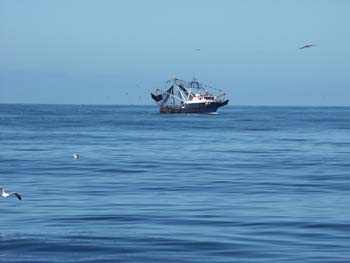
It was just the start of the show. We were lead out of
the bay by several large grey whales, a turtle, dolphin and seals and three
shrimp boats. It would be the last bit of land or boats that we’d see for
several more days. We have not seen a blip on the radar of any humanity for
days though this is a much traveled route in the months of November December.
We are a little late in the season.
We had a nice easy crossing past Cabo San Lucas, and across
the Sea of Cortez.
POOP DECK
February 1st,we approached Puerto Vallarta, on
my birthday! And my greatest birthday present was that Ziggy decided to fully
take advantage of the poop deck at that moment.
It was a happy day!
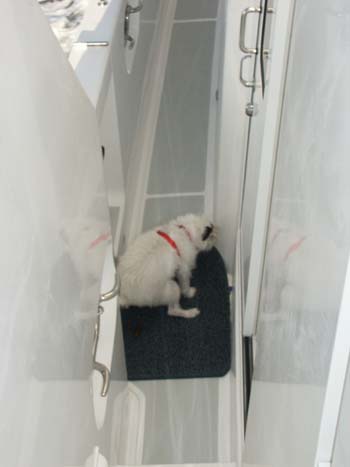 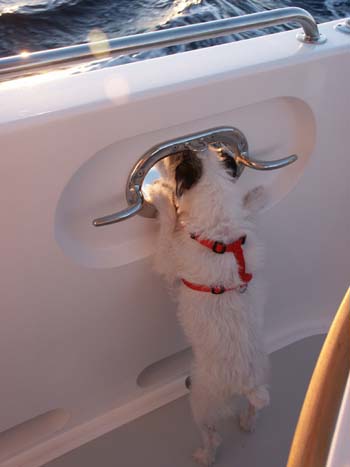
PUERTO VALLARTA
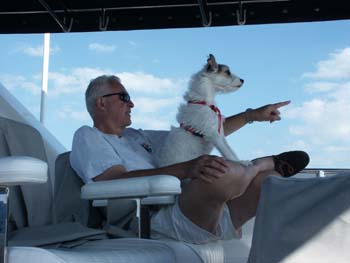 We entered our long awaited destination, the small inlet
into Paradise Marina. A Mexican fellow led us in on a ski jet guiding us
through a narrow channel which a few years earlier was a mangrove swamp. Mega
yachts and sailboats, and stylish hotels now inhabit it. It was clean and
pristine, and lots of shore power and they even boasted having potable water on
the docks. We preferred to keep making our water from the sea when we are out,
taking no chances on getting any bacteria or parasites in our water tanks. We entered our long awaited destination, the small inlet
into Paradise Marina. A Mexican fellow led us in on a ski jet guiding us
through a narrow channel which a few years earlier was a mangrove swamp. Mega
yachts and sailboats, and stylish hotels now inhabit it. It was clean and
pristine, and lots of shore power and they even boasted having potable water on
the docks. We preferred to keep making our water from the sea when we are out,
taking no chances on getting any bacteria or parasites in our water tanks.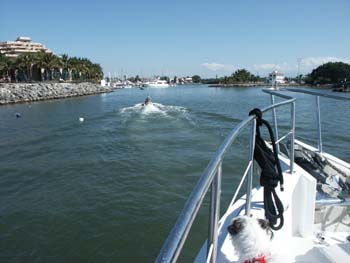
PARADISE
VILLAGE, PUERTO VALLARTA, MEXICO
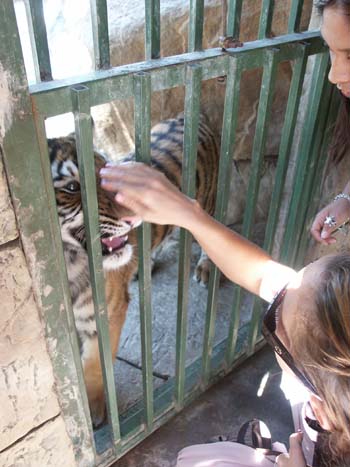 We could hear strange screeches and roars of exotic birds
and animals as we approached. The resort had a zoo of some sorts and we could
hear them throughout our stay day and night. We had now gone one day from
desolate dry desert conditions to tropical jungle including exotic animals. We
came from land with not a blade of grass to a land boasting bountiful hibiscus
and bougainvillea blossoms, palms, ferns, cervezas and the easy life. We could hear strange screeches and roars of exotic birds
and animals as we approached. The resort had a zoo of some sorts and we could
hear them throughout our stay day and night. We had now gone one day from
desolate dry desert conditions to tropical jungle including exotic animals. We
came from land with not a blade of grass to a land boasting bountiful hibiscus
and bougainvillea blossoms, palms, ferns, cervezas and the easy life.
PUERTO
VALLARTA, MEXICO
Puerto Vallarta, the town, is not like when I visited 40
years just after the filming of The Night of the Iguana and remembering the hot
steamy stories of Elizabeth Taylor and Richard Burton. It still has the
cobblestone streets, but the rumbling of the stinky noisy buses don’t do them
justice. I could have done without seeing K Mart, Sam’s Club and Hooter’s and
Internet cafes. But I guess that’s the world now. We are looking forward to
heading south where we will see less and less Gringos and the damage they do.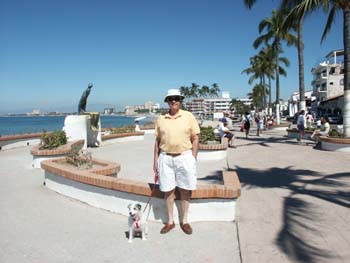
Presently as I write this, we have left Puerto Vallarta
after a pleasant stay in paradise and are heading two nights and one day to Ixtapa for a day of swimming and snorkeling off the boat and then into Acapulco
for refueling, a little rest, and provisioning. Our captain has just finished
ordering 1500 gallons of fuel in Spanish over the cell phone so the fuel dock in
Acapulco will be ready when we arrive. It’s a two-night one-day haul but we’re
getting used to this kind of traveling and the infamous “night watches”.
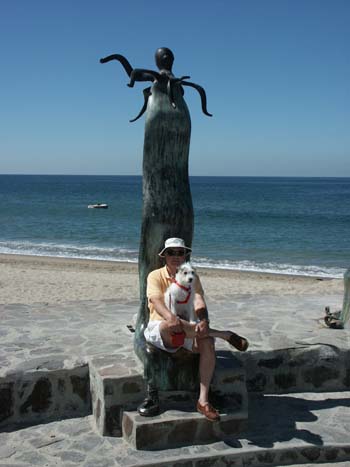 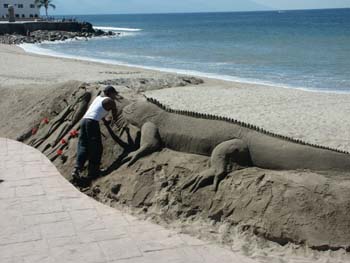
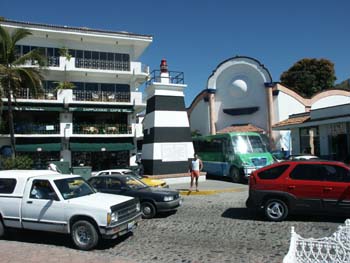
|